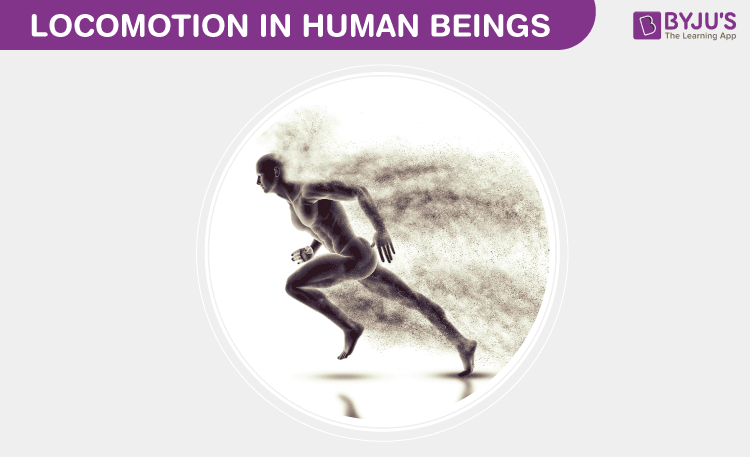
Table of Contents
Introduction
All living organisms exhibit a special characteristic feature of moving the whole or a part of the body from one place to another.
What is Locomotion?
Various kinds of motions such as walking, running, jumping, swimming, etc. by the body are known as locomotion.
Movement is one of the characteristic features of all living organisms. Locomotion helps us to move from one place to other. In general, animals require locomotion for defence, searching for food and shelter.
Explore more: Types Of Body Movement
The locomotory movement is the coordinated movement of various bones, tissues and joints such as cartilage, muscles, bone, ligaments, tendons, etc.
Also Read: Difference Between Locomotion and Movement
Types of Muscles in the Human Body
There are three types of muscles in the human body based on contractibility, elasticity, excitability, and extensibility. They are as explained below-
Skeletal System in Human Body
They are also called voluntary muscles and are under the control of the human body. These are usually present in the different parts of the body such as the body wall, legs, neck, face, etc. They are also found attached to bones through the tendons. These types of muscles are striated in nature. They help in the movement and locomotion of the human body.
Explore More: Skeletal Muscles
Smooth muscles
Smooth muscles are also called involuntary muscles and are controlled by the autonomic nervous system. These smooth muscles consist of a non-striated, slender type of tapering fibres. These muscles are found in the walls of the internal organs such as the reproductive tract, blood vessels, alimentary canal, etc.
Also Read: Difference between Voluntary and Involuntary Muscles
Cardiac muscles
The cardiac muscles consist of muscle fibres which are in short and striated form. Cardiac muscles are branched and are found in the heart of the body. These muscles are also involuntary in nature, as their movement cannot be controlled by thought.
Also Read: Muscular System
Skeletal System in Human Body
The skeletal system provides a structural framework to the body and provides a definite shape. The skeletal system provides protection to internal organs. The main function of the skeletal system is to help the body in locomotion and movement.
Also Refer: Skeletal muscle
Functions of Skeletal System in Locomotion and Movement
The skeletal system plays a vital role in locomotion and movement. The coordinated movement of skeletal muscles, bones, and ligaments helps in locomotion.
- The skeletal system provides a definite shape and posture to organisms
- They provide a structural framework
- It imparts protection to the internal organs that are delicate such as the spinal cord, Human brain, and the lungs
- It assists the body in the locomotory movements from one place to another
- The skeletal system also helps in the breathing process through the movement of the sternum and the ribs
Also Read: Types Of Body Movement
Learn more in detail about the Locomotion, movements, locomotory organs of different animals or any other related topics at BYJU’S Biology
Recommended Videos:



Comments